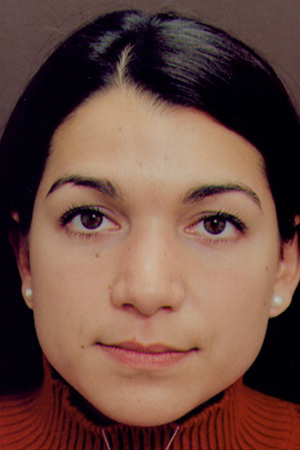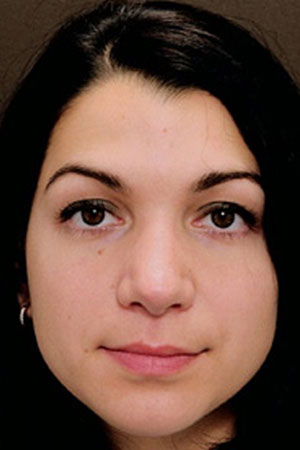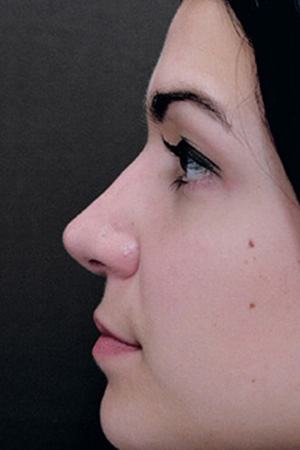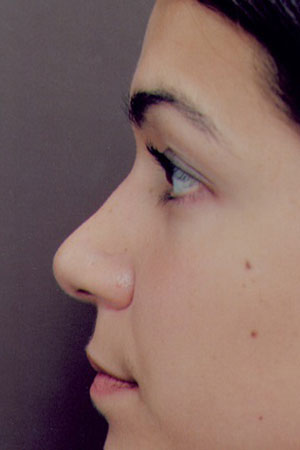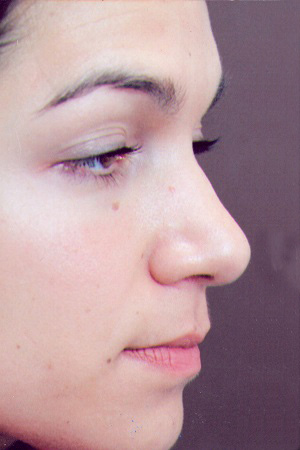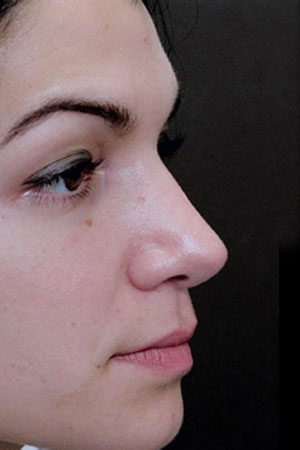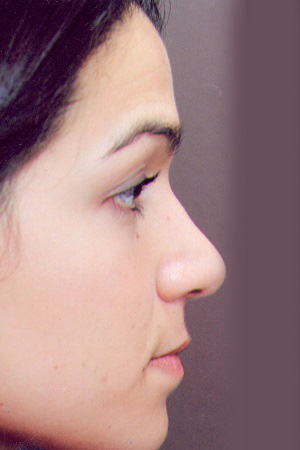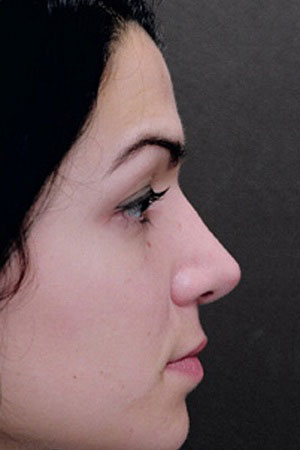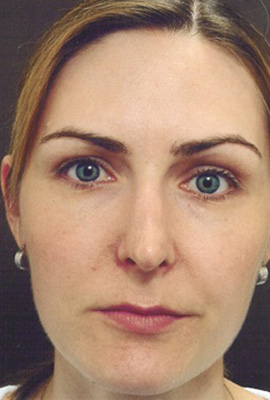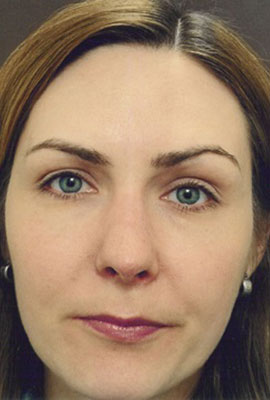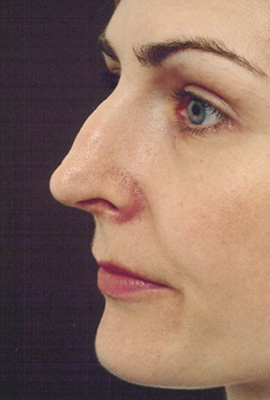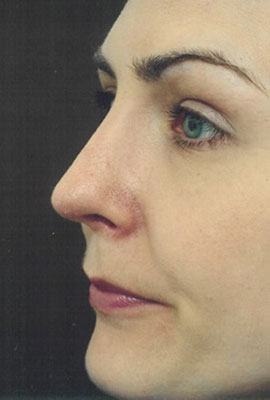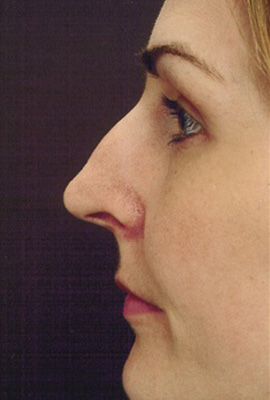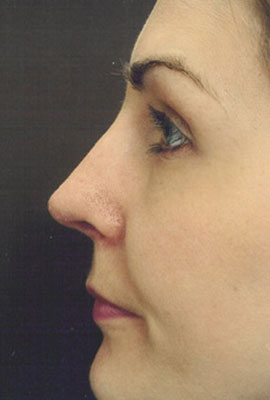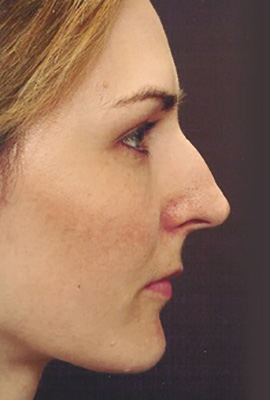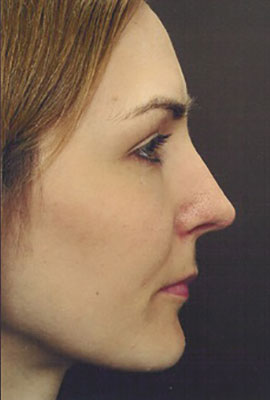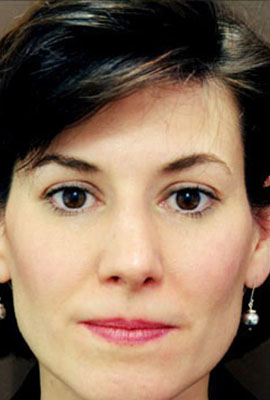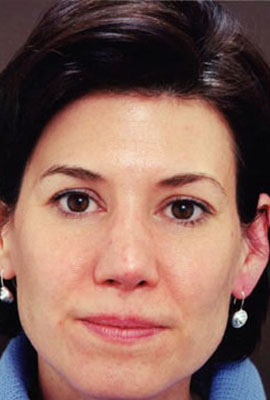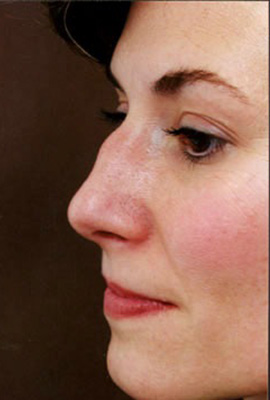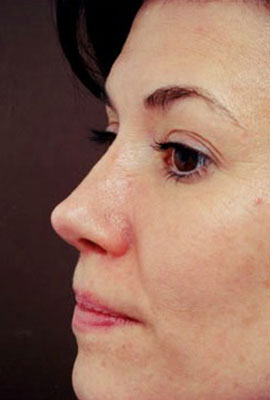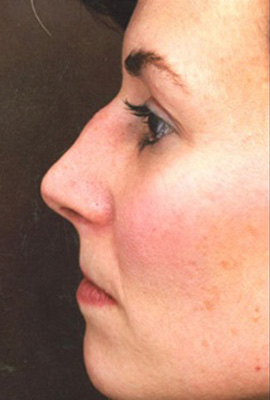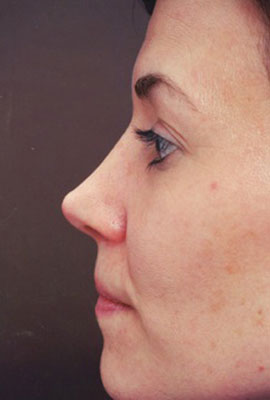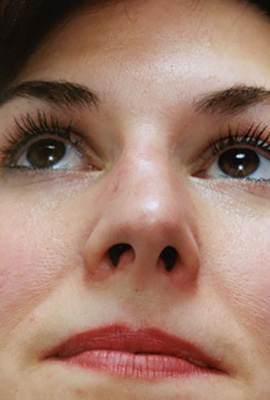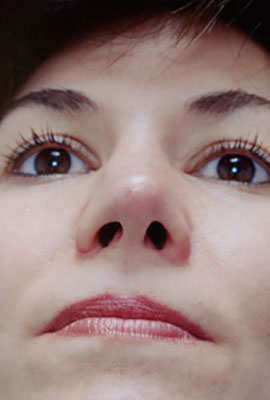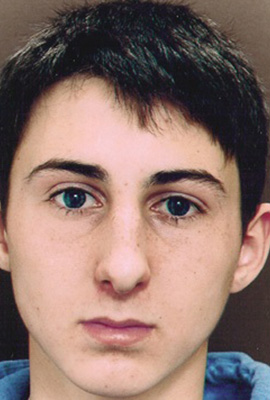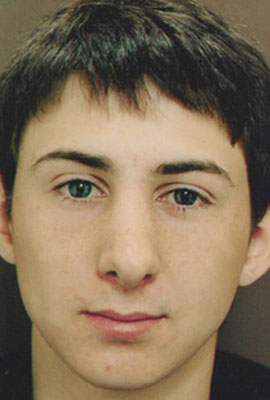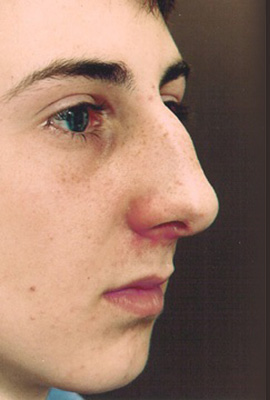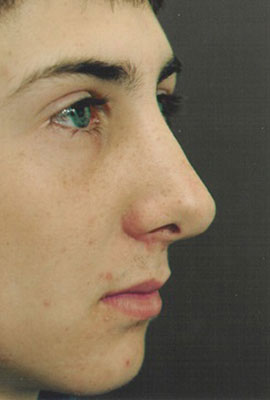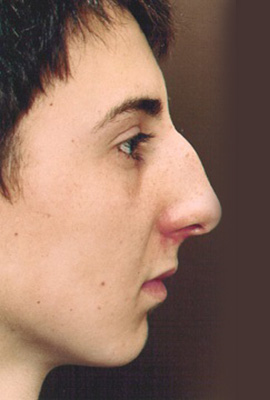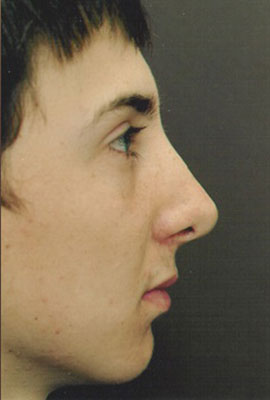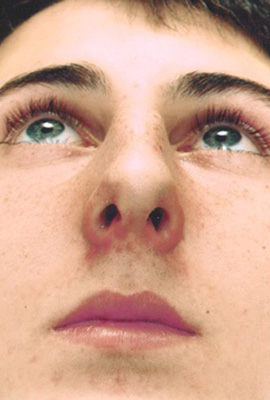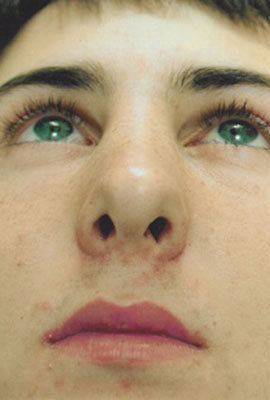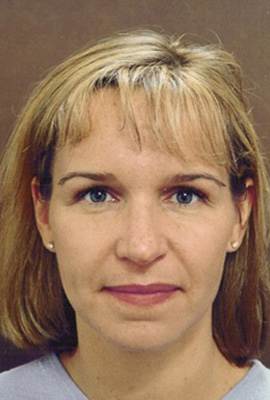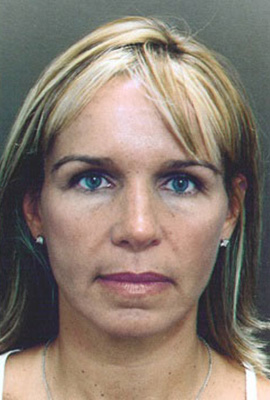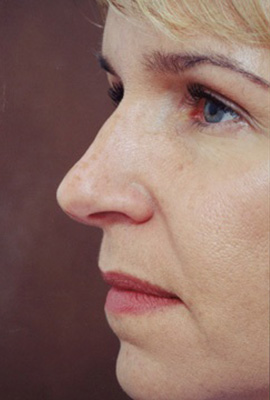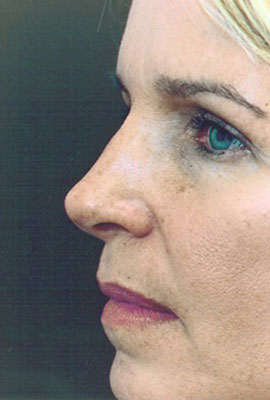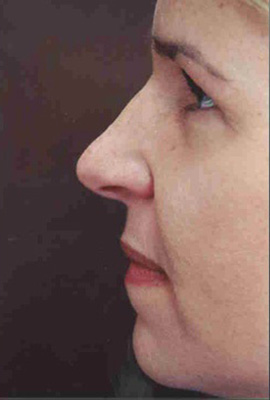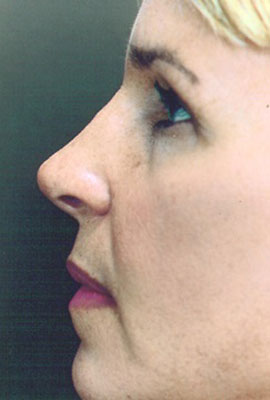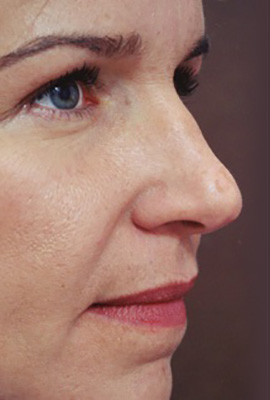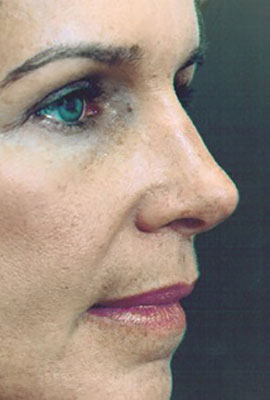Primary Rhinoplasty Patient 06
Description:
This 29 year old woman was bothered by a nose that seemed too fat and too blunt. Because her skin was moderately thick, a nasal reduction would only make the nose seem rounder and less refined. Conservative dorsal and tip grafts were used to create shape and improve proportion, giving her a nose that seems narrower and more elegant.
Primary Rhinoplasty Patient 07
Description:
This tall woman wanted to reduce her nose and yet maintain an appropriately strong bridge height; the surgical plan was altered according to the patient’s wishes, something I try to do for all my patients.
Primary Rhinoplasty Patient 08
Description:
This patient had prior nasal trauma that left her with an asymmetrical nose and a poor airway. The bump was reduced and septal cartilage was used to re-support the airway and create better symmetry. In noses that are quite asymmetrical, it is almost impossible to obtain perfect symmetry; patients must always be realistic, as this woman was.
Primary Rhinoplasty Patient 09
Description:
This young man had a high bridge with heavy bones. Reduction of the excess and septal cartilage tip grafts have improved the airway and nasal balance. In men, it is particularly important not to reduce the bridge too much or to make radical changes.
Primary Rhinoplasty Patient 10
Description:
This patient had poor airways as a result of common anatomical variations in her nasal valves. The nose was refined and the valves reconstructed with septal cartilage. It is important to note that this patient had a straight preoperative nose. This shape is important to recognize, because it is easy for the surgeon to do too much.
